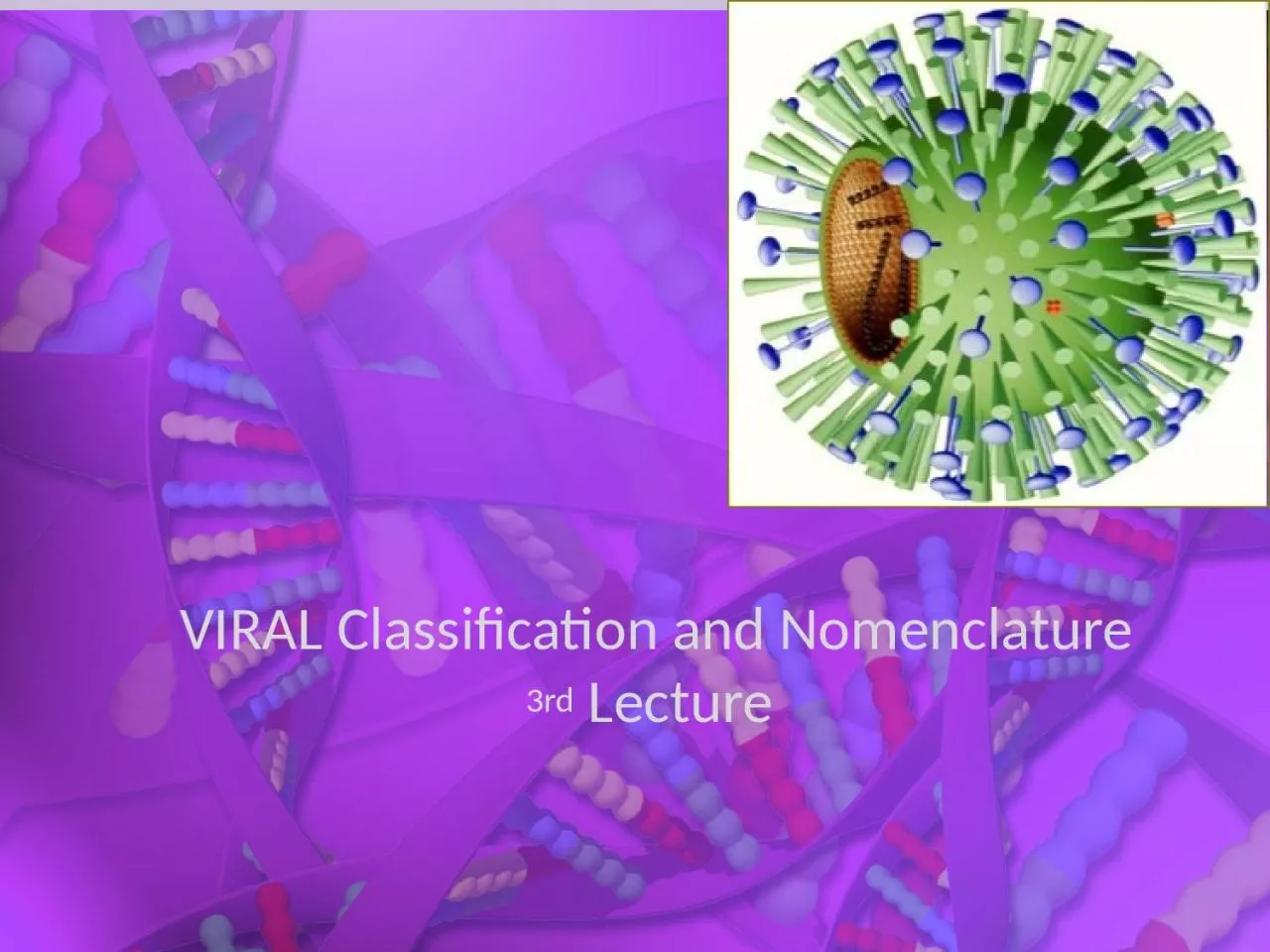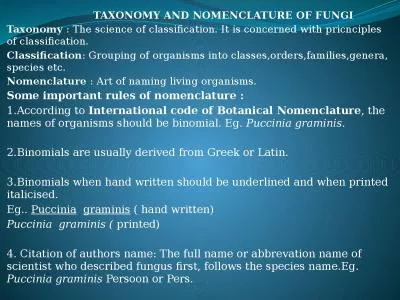PPT-VIRAL Classification and Nomenclature
Author : paisley | Published Date : 2024-01-29
3rd Lecture Generalized Structure of Viruses Viral components Nucleic acids Capsid Envelope Glycoprotein Basic virus structure Capsid protein Nucleocapsid Naked
Presentation Embed Code
Download Presentation
Download Presentation The PPT/PDF document "VIRAL Classification and Nomenclature" is the property of its rightful owner. Permission is granted to download and print the materials on this website for personal, non-commercial use only, and to display it on your personal computer provided you do not modify the materials and that you retain all copyright notices contained in the materials. By downloading content from our website, you accept the terms of this agreement.
VIRAL Classification and Nomenclature: Transcript
Download Rules Of Document
"VIRAL Classification and Nomenclature"The content belongs to its owner. You may download and print it for personal use, without modification, and keep all copyright notices. By downloading, you agree to these terms.
Related Documents














